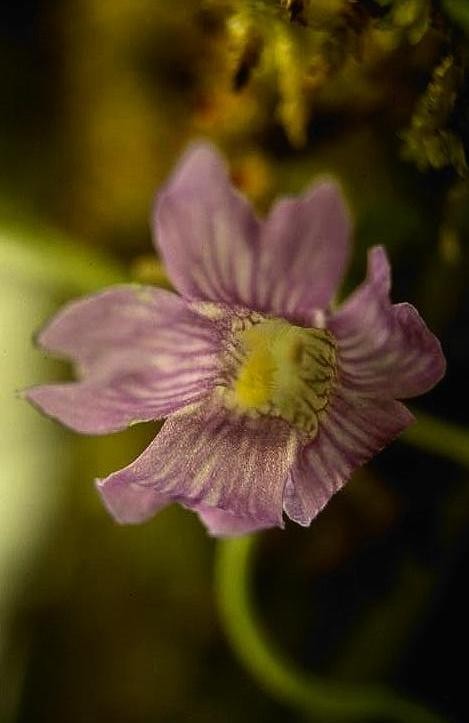Blue butterwort
(Pinguicula caerulea)

Description
Pinguicula caerulea, commonly referred to as blue butterwort, blueflower butterwort, or violet butterwort, is a flowering plant species in the carnivorous butterwort (Pinguicula) genus and bladderwort family (Lentibulariaceae). It is a perennial dicot. It grows in moist sandy pineland habitat in the south-east USA. Caerulus is Latin for from the sky or sea and refers to the color of the flowers. Pinguicula, commonly known as the butterworts, is a genus of carnivorous flowering plants in the family Lentibulariaceae. They use sticky, glandular leaves to lure, trap, and digest insects in order to supplement the poor mineral nutrition they obtain from the environment. Of the roughly 80 currently known species, 13 are native to Europe, 9 to North America, and some to northern Asia. The largest number of species is in South and Central America. The name Pinguicula is derived from a term coined by Conrad Gesner, who in his 1561 work entitled Horti Germaniae commented on the glistening leaves: "propter pinguia et tenera folia…" (Latin pinguis, "fat"). The common name "butterwort" reflects this characteristic. The majority of Pinguicula are perennial plants. The only known annuals are P. sharpii, P. takakii, P. crenatiloba, and P. pumila. All species form stemless rosettes. Butterworts can be divided roughly into two main groups based on the climate in which they grow; each group is then further subdivided based on morphological characteristics. Although these groups are not cladistically supported by genetic studies, these groupings are nonetheless convenient for horticultural purposes.
Taxonomic tree:







